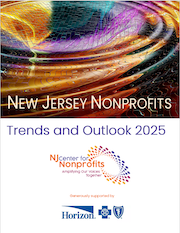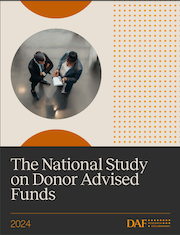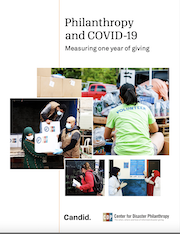Site Search
- resource provided by the Forum Network Knowledgebase.
Search Tip: Search with " " to find exact matches.
The City of Newark and Newark Philanthropic Liaison are working closely with several consortia of nonprofits to address some of the City’s most critical challenges. Grantmakers with an interest in Newark are connecting with these groups to better understand issues, interact with organizational leaders, and find ways to leverage philanthropy across a range of needs.
The coalitions often have ambitious agendas that focus on reviewing and changing policy on local, statewide and national levels. They offer a platform to share information and create strong cases for increased investment from both public and private sources. Below is an overview of just three of these groups. Through their convenings, they provide a powerful opportunity for Newark-related nonprofits and grantmakers to mobilize to improve the fortunes of the State’s largest City.
Opportunity Reconnect
Mayor Cory Booker has made public safety the leading priority of his administration. Success will come only through lowered recidivism, better management, and increased job opportunities and support for persons returning from prison. The Opportunity Reconnect (OR) consortia meets weekly at Essex County College, the site of OR’s comprehensive one-stop center that offers ex-prisoners an array of services from dozens of organizations and agencies.
OR’s strength lies in its ability to create partnerships and memorandums of understanding among for-profit government contractors, community-based groups and government agencies. The shared protocols are having a profound effect on the City’s ability to provide efficient and effective services for thousands of returning inmates each month. The agreements are enabling the City to respond to RFPs from both private and federal sources to strengthen the capacity of OR and its effect on public safety. The City welcomes participation of grantmakers to further leverage the strength of these proposals and maximize OR’s continued growth.
Interagency Collaboration for Addiction Treatment
This informal collaborative of nonprofits, faith-based groups, government agencies, and funding partners meets regularly at Integrity House, a long-term residential and outpatient treatment program. Integrity House is the lead agency for the United Way’s Bridge to Recovery, a consortium effort of over 200 agencies dedicated to helping those with addiction problems.
Among ICAT’s goals is the creation of a central Newark facility to handle all intake, referral and screening of individuals in need of detox. The group is also seeking to link and combine databases among agencies for better support of clients, who often include the homeless and ex-prisoners. A number of legislative barriers prevent some persons from receiving aid to cover costs of addiction treatment. These persons often end up in hospital emergency rooms or under the jurisdiction of law enforcement. ICAT is looking at ways to advocate for policy changes that would provide the additional preventive-care funding to remedy these situations.
Green Future Summit Working Groups
Mayor Booker has called for the City to become a leader in urban sustainability by implementing economic and environmental strategies that will make Newark a safer, wealthier, and healthier place for its children and families. Under the auspices of Apollo Alliance, a national organization, a team of allies is developing an agenda and recruiting participants for the “Green Future Summit” in Newark on September 11-12. Pre-summit planning sessions have involved a coalition of businesses, government leaders, environmental groups, community-based organizations and grantmakers.
The coalition has divided into working groups focused on three areas: green buildings, green space, and green economic development/jobs. The working groups are now drafting roadmaps and defining concrete, measurable goals and strategies for each issue area (e.g. "retrofit 100 homes"). They are also securing commitments from stakeholders on how they will work to meet these goals.
The groups communicate through listservs and periodic check-in calls as they shape the Summit agenda, recruit speakers, and build the relationships necessary to carry their work forward to develop a roadmap for the City. Members of the CNJG are playing an active role in the Summit and additional partners are welcome.
CNJG members can gather a wealth of information by tapping into the resources of Newark’s collaborative groups. Additional consortia have been formed to address the foreclosure crisis, homelessness, newly-formed Family Success Centers, and other areas.
What comes after “strategic...?” If you said, “planning,” you’re not alone. And for many leaders of community foundations, especially small ones who don’t have the time or money for a big process, anxiety is the feeling that follows. If that’s the case, this guide is for you.
It invites you to test-drive some activities to bring your current program, operations and community leadership strategies into focus before you decide whether to create a plan or not. It helps you discover ongoing strategic practices and decide whether to keep them or not. If you already have done a strategic plan, and it is languishing on a shelf, this guide will help you refresh it.
PART A: Good Strategy Takes Practice (Not Just Planning)
PART B: Do Your Discovery
PART C: Jumpstart Your Strategy Narrative
PART D: Bring It Together
Looking To What’s Next
Impact 100 Jersey Coast awarded four $100,000 Impact grants and five $1,600 Mission grants at their recent event.


This project represents the most extensive independent study on DAFs to date.
Thanks to the collective efforts of 111 DAF programs that voluntarily provided anonymized data to the research team, the dataset covers nine years of activity from more than 50,000 accounts, with over 600,000 inbound contributions to DAFS and more than 2.25 million outbound grants from DAFs.
The DAFRC research team hopes this data will be used to improve best practices, inform relevant regulation, or enhance the field’s use of DAFs as a philanthropic tool for donors, DAF sponsoring organizations, and other sector partners.
As we witness the initial impact of Hurricane Dorian, we are reminded that many of our communities are still targets for further devastation from this storm over the next few days.
While we recognize that many of us have survived recent hurricanes like Sandy and Maria, we also know that the struggle continues, and we need to do our best to help meet the needs of current victims caught in the wake of the storm.
In light of this situation, we are providing our membership with the latest information to help you determine how your organization might engage in response and recovery efforts.
Resources
- The Center for Disaster Philanthropy has created a Hurricane Dorian disaster profile, which provides updates on the storm as well as information on the areas of greatest need
- The Center for Disaster Philanthropy has also launched the CDP 2019 Atlantic Hurricane Season Recovery Fund to support communities that will be affected by Hurricane Dorian. This fund focuses on medium- and long-term recovery, with the understanding that individuals and communities will need the support of private philanthropy for months and years to come as they navigate the road to recovery.
- The Disaster Philanthropy Playbook is a comprehensive handbook outlining best practices and innovative approaches that the philanthropic community can adopt in addressing recovery after natural disasters. CNJG’s lessons learned in the aftermath of Superstorm Sandy helped lead the creation of this Playbook.
- Locally in Florida, the Miami Foundation for a Greater Miami created a Hurricane Dorian resource page.
- The Jessie Ball duPont Fund resource Creating Order from Chaos: Roles for Philanthropy in Disaster Planning and Response provides a framework for steps that can be taken for philanthropy to respond to disasters.
- The New York Times has released an article sharing multiple ways to help Hurricane Dorian survivors in the Bahamas.
- Charity Navigator has created a list of high-rated organizations providing aid and relief for Hurricane Dorian for both short-term and long-term relief.
- Sadly, CNJG’s post Sandy work and the briefings hosted and compiled by CNJG still hold lessons for today. You can review the briefings from Series 1 and Series 2 in either audio or written format. The briefings provide timely, relevant information about how grantmakers can help in the aftermath of a major storm.
Finally, if you think it would be useful, we’ll convene an open-forum conference call for CNJG members to share how your organization might be thinking about your own response efforts. If you’re interested in connecting with your colleagues for this kind of discussion, please contact me, and we will set up a call.
Yours in solidarity,
Maria Vizcarrondo, President and CEO
Council of New Jersey Grantmakers
Alexis Bivens, Vice President of Strategic Initiatives and Managing Director of the Supporting Organizing Work Funders Collaborative, Connecticut Council on Philanthropy, presents the process and progress of how an affinity group transformed into a funders collaborative, how it was resourced, and challenges along the way.

"Find people who will make you better."
—Michelle Obama
The day has arrived. It is my last day serving as President and CEO of the Council of New Jersey Grantmakers. In a few days, I will step over to your side of the aisle in my role leading the Champlin Foundation.
As I said at that beautiful and overwhelmingly wonderful farewell gathering last week, it has been an extraordinary gift and a profound privilege to serve in this role these past 13-plus years. And I feel very good about leaving this precious network in the hands of the exceptional team of Pat Foo, Theresa Jacks, and Craig Weinrich, along with the very capable interim leadership of Jon Shure and Connie Ludwin.
I’ve been struggling with what to say in my farewell message to all of you, the spectacular membership of the Council. First and foremost, I want to express my thanks and gratitude.
Thank you for the deep and wide education I’ve received these past 13 years because of all you do and want to do better. I’ve often said the best thing about this job is that I get to learn a little bit about a lot of different things because the membership has such fascinating and intensely important interests. I have gratitude for the amazing relationships I’ve been able to have with some of the smartest, kindest, most thoughtful, and creative people imaginable.
I also am enormously grateful for the opportunities I’ve been given.
- My year in Lead New Jersey that really laid so much of the groundwork I needed for CNJG’s programming and affinity groups.
- My two-month sabbatical that led directly to our Race, Racism and Ramifications for Philanthropy learning journey.
- The privilege to serve on the board and then chair our national network, the United Philanthropy Forum.
- And, the ability to help the Council make a meaningful difference in our field and our state through initiatives like Facing Our Future, the Disaster Philanthropy Playbook and our post-Sandy work, as well as creation of CNJG’s Guiding Beliefs and Principles.
Here is what is at the heart of all of it though: When a funder joins the Council it means they recognize they cannot do their best work in a vacuum or in isolation. They realize the need to find people who will make them better, just as I reference in Michelle Obama's quote above. They want to be smarter, work more thoughtfully, be truly effective. The Council is at its best when our members come together to learn, share ideas and strategies, collaborate, and be open to innovation. When I was given the gift of leading the Council, my mother would ask me to explain again what it was I would be doing. My response to her became my consistent little “elevator speech" for years to come. “My organization helps those that make grants be the best grantmakers they can be.”
As you all know well, working as a funder can get pretty heady. How does the joke go? Congratulations, you got a foundation job. You’ve now told your last bad joke. The power imbalance is so extreme.
What I’ve learned is that the best funders are the ones that really listen, not talk at their grantees about what they ought to be doing. Respect, faith, and appreciation for the people working in nonprofit charities is the hallmark of their approach. The best funders are the ones that show up as planned, on time for meetings and site visits, that don’t make an applicant jump through endless hoops for a grant -- especially a small grant.
The funders I’ve come to admire most are those that seek to understand a charity’s work and trust the expertise and wisdom of its executive leadership. These funders don’t micro-manage, mansplain, second-guess, or over burden. These funders recognize the power dynamic at play yet seek candid, colleague-to-colleague conversations and problem-solving with nonprofit leaders. They power-up nonprofit colleagues instead of powering over them.
These are just some of the marvelous lessons you’ve shared with me over the years, and I’m grateful to have them as I head into the role of a grantmaker for the largest private foundation in a small but mighty state.
With bountiful thanks and appreciation,
Nina Stack, President
Council of New Jersey Grantmakers
